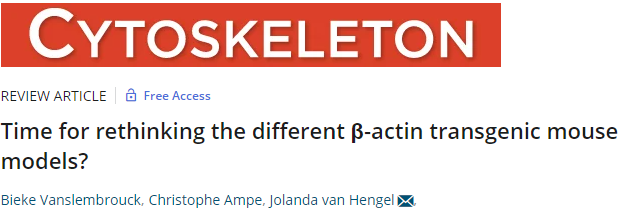|
Our review titled 'Time for rethinking the different Beta actin transgenic mouse models?' has been accepted for publication in the journal 'cytoskeleton'.
The article can be accessed by clicking here. A short abstract can be found below: The actin family is crucial for many cellular processes and in mammals muscle and non‐muscle forms exist. The latter group contains cytoplasmic‐β‐actin and cytoplasmic‐γ‐actin, almost identical in amino acid sequence and with a significant functional overlap. We introduce the properties of the Actb gene and mRNA transcript(s) with main focus on the 3′UTR and its unique features, that is, the zipcode and two polyadenylation sites creating transcripts of different lengths. Several transgenic mouse models with a modified Actb locus have been created. Whole body knockouts and, with one exception, insertion models lead to embryonic lethality indicating that the Actb gene or transcripts or translated β‐actin are essential. Tissue specific ablation at later developmental stages lead to no, or mild phenotypes, suggesting that the Actb gene or β‐actin protein is somewhat dispensable. Gene edited Actb mice that produce γ‐actin are viable. This assumes that the nucleotide sequence of Actb is important and not the specific amino acid sequence of the protein it encodes. Upregulation of other actin paralogs was frequently observed upon β‐actin ablation and can also engage in the phenotype. For a better understanding, it will be necessary to analyze in current and future models all relevant actin transcripts and protein levels in a standardized and comprehensive way.
0 Comments
Leave a Reply. |
|
Medical Cell Biology lab
|


 RSS Feed
RSS Feed